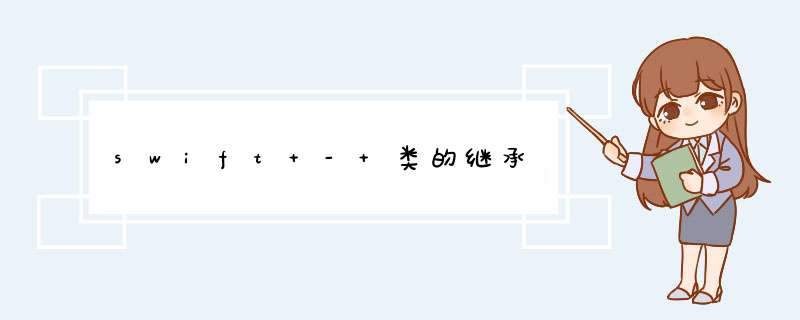
不同于结构体和枚举类型,继承是类特有的。
语法:
class MyClass:Superclass{ //MyClass:子类 Superclass:父类
//类的定义
}
EG:
class Animal {
var eyes :Int
var month :Int
var nose :Int
var voice :String
init(){
eyes =2
month =1
nose =1
voice =@H_419_149@"voice"
}
func description() ->String {
return"\(eyes) eyes ; up to\(month) month"
}
}
class Cat: Animal {
overrIDeinit() { //重写init()
super.init()
voice =@H_419_149@"miao"
}
}
var cat = Cat()
print(cat.@H_701_301@voice) //"miao\n"
2.重写属性
class Animal {
var eyes :Int
var month :Int
var nose :Int
var voice :String
init(){
eyes =0
month =0
nose =0
voice =@H_419_149@"voice"
}
func description() ->String {
return"\(eyes) eyes ; up to\(month) month"
}
}
class Cat: Animal {
overrIDeinit() {
super.init()
voice =@H_419_149@"miao"
}
overrIDevar eyes: Int{
get{
returnsuper.eyes
}
set{
super.eyes =max(newValue,100)
}
}
}
var cat = Cat()
print(cat.voice)
cat.eyes =1000
print(cat.eyes)
若不想被继承,可在前面加final.
总结以上是内存溢出为你收集整理的swift - 类的继承全部内容,希望文章能够帮你解决swift - 类的继承所遇到的程序开发问题。
如果觉得内存溢出网站内容还不错,欢迎将内存溢出网站推荐给程序员好友。
欢迎分享,转载请注明来源:内存溢出

 微信扫一扫
微信扫一扫
 支付宝扫一扫
支付宝扫一扫
评论列表(0条)